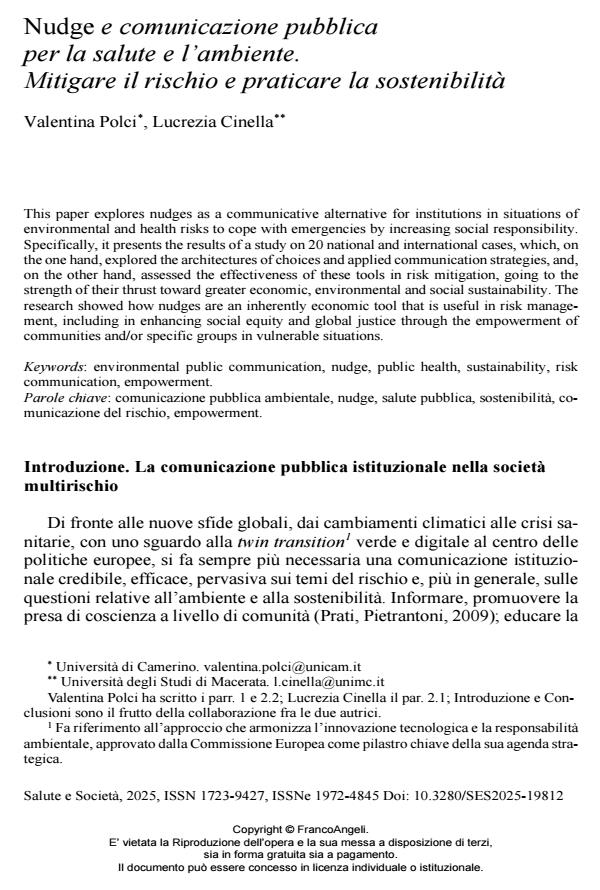Nudge e comunicazione pubblica per la salute e l’ambiente. Mitigare il rischio e praticare la sostenibilità
Titolo Rivista SALUTE E SOCIETÀ
Autori/Curatori Valentina Polci, Lucrezia Cinella
Pubblicazione Online First 28/05/2025 Fascicolo 2025/Online First
Lingua Italiano Numero pagine 15 P. 1-15 Dimensione file 264 KB
DOI 10.3280/SES2025-19812
Il DOI è il codice a barre della proprietà intellettuale: per saperne di più
clicca qui
Qui sotto puoi vedere in anteprima la prima pagina di questo articolo.
Se questo articolo ti interessa, lo puoi acquistare (e scaricare in formato pdf) seguendo le facili indicazioni per acquistare il download credit. Acquista Download Credits per scaricare questo Articolo in formato PDF

FrancoAngeli è membro della Publishers International Linking Association, Inc (PILA)associazione indipendente e non profit per facilitare (attraverso i servizi tecnologici implementati da CrossRef.org) l’accesso degli studiosi ai contenuti digitali nelle pubblicazioni professionali e scientifiche
This paper explores nudges as a communicative alternative for institutions in situations of environmental and health risks to cope with emergencies by increasing social responsibility. Specifically, it presents the results of a study on 20 national and international cases, which, on the one hand, explored the architectures of choices and applied communication strategies, and, on the other hand, assessed the effectiveness of these tools in risk mitigation, going to the strength of their thrust toward greater economic, environmental and social sustainability. The research showed how nudges are an inherently economic tool that is useful in risk manage-ment, including in enhancing social equity and global justice through the empowerment of communities and/or specific groups in vulnerable situations.
Parole chiave:comunicazione pubblica ambientale, nudge, salute pubblica, sostenibilità, co-municazione del rischio, empowerment.
- Integrating Urban Design, Healthy Habits, and Socio-Ecological Networks: A One Health and Well-Being Framework for Sustainable Cities Massimo Sargolini, Ana Sopina, Valentina Polci, David Mariani, Chiara Paolini, Maurizio Mariani, in Sustainability /2025 pp.10014
DOI: 10.3390/su172210014
Valentina Polci, Lucrezia Cinella, Nudge e comunicazione pubblica per la salute e l’ambiente. Mitigare il rischio e praticare la sostenibilità in "SALUTE E SOCIETÀ" Online First/2025, pp 1-15, DOI: 10.3280/SES2025-19812